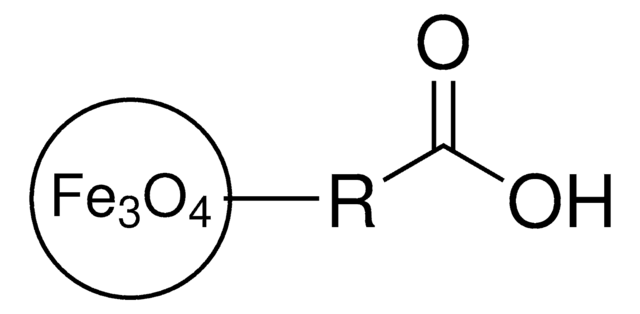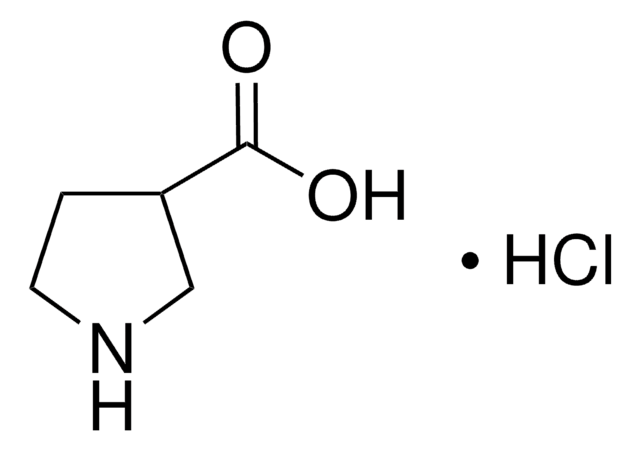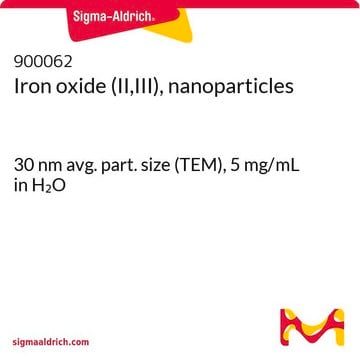747327
Iron oxide(II,III), magnetic nanoparticles solution
30 nm avg. part. size (TEM), amine functionalized, 1 mg/mL Fe in H2O, dispersion
Synonym(s):
Fe NP NH2, FexOy, Magnetic iron oxide nanocrystals, Magnetite, Superparamagnetic iron oxide nanoparticles
About This Item
Recommended Products
form
dispersion
nanoparticles
concentration
1 mg/mL Fe in H2O
magnetization
>45 emu/g, at room temperature; under 4500 Oe
color
black
avg. part. size
30 nm (TEM)
density
~1 g/mL at 25 °C
functional group
amine
storage temp.
2-8°C
SMILES string
O=[Fe].O=[Fe]O[Fe]=O
InChI
1S/3Fe.4O
InChI key
SZVJSHCCFOBDDC-UHFFFAOYSA-N
Looking for similar products? Visit Product Comparison Guide
General description
Application
Legal Information
Storage Class Code
12 - Non Combustible Liquids
WGK
WGK 2
Flash Point(F)
Not applicable
Flash Point(C)
Not applicable
Certificates of Analysis (COA)
Search for Certificates of Analysis (COA) by entering the products Lot/Batch Number. Lot and Batch Numbers can be found on a product’s label following the words ‘Lot’ or ‘Batch’.
Already Own This Product?
Find documentation for the products that you have recently purchased in the Document Library.
Customers Also Viewed
Articles
Iron oxide nanoparticles find diverse applications in magnetic data storage, biosensing, and drug delivery due to their properties.
Iron oxide nanoparticles find diverse applications in magnetic data storage, biosensing, and drug delivery due to their properties.
Iron oxide nanoparticles find diverse applications in magnetic data storage, biosensing, and drug delivery due to their properties.
Iron oxide nanoparticles find diverse applications in magnetic data storage, biosensing, and drug delivery due to their properties.
Our team of scientists has experience in all areas of research including Life Science, Material Science, Chemical Synthesis, Chromatography, Analytical and many others.
Contact Technical Service


